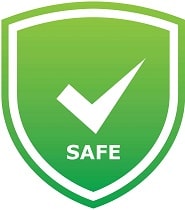Is Maternal Cytomegalovirus Safe in Breastfeeding
Question
I am a breastfeeding mother and i want to know if it is safe to use Maternal Cytomegalovirus? Is Maternal Cytomegalovirus safe for nursing mother and child? Does Maternal Cytomegalovirus extracts into breast milk? Does Maternal Cytomegalovirus has any long term or short term side effects on infants? Can Maternal Cytomegalovirus influence milk supply or can Maternal Cytomegalovirus decrease milk supply in lactating mothers?
Maternal Cytomegalovirus lactation summary

- DrLact safety Score for Maternal Cytomegalovirus is 1 out of 8 which is considered Safe as per our analyses.
- A safety Score of 1 indicates that usage of Maternal Cytomegalovirus is mostly safe during lactation for breastfed baby.
- Our study of different scientific research also indicates that Maternal Cytomegalovirus does not cause any serious side effects in breastfeeding mothers.
- Most of scientific studies and research papers declaring usage of Maternal Cytomegalovirus safe in breastfeeding are based on normal dosage and may not hold true for higher dosage.
- Score calculated using the DrLact safety Version 1.2 model, this score ranges from 0 to 8 and measures overall safety of drug in lactation. Scores are primarily calculated using publicly available case studies, research papers, other scientific journals and publically available data.
Answer by Dr. Ru: About Maternal Cytomegalovirus usage in lactation
Cytomegalovirus (CMV) is a virus that belongs to herpesvirus family. Between 30 and 100% of adults become infected throughout their lives. The infection is usually asymptomatic or very mild without treatment required. Once overcome, the virus remains latent within the body to be reactivated occasionally.
Only intrauterine congenital infection has a higher rate of severe disease.
CMV is found in 50 to 97% of breastmilk samples obtained from healthy women, yet only 15 to 19% of infants become infected, and only 4% develope symptoms which may be generally fairly mild and no treatment is required (Jang 2016, Martins 2016, Romero 2015, García 2015, Lanzieri 2013, Kurath 2010).
More serious infections have been reported (Sordelli 2015) that happened in less than 1% of at-term infants.
As lower the gestational age as greater the probability of appearance of symptomatic cases (Martins 2016, Yoo 2015), although in some series no differences between premature infants and term infants were found (Lanzieri 2013).
On very preterm births, mostly among infants with an age lower than 30 weeks and a birthweight lower than 1,000 g, CMV infection acquired through breastmilk may cause more severe symptoms that would require treatment with Ganciclovir (Mehler 2014, Okulu2012, Lombardi 2012). However, frequency rate is usually very low without occurrence of neurological and / or other long-term sequelae (Jim 2015, Bevot 2012), albeit some authors have detected small differences on some neurologic developmental scales (Goelz 2013). Since some cases of especially serious infections have been reported in premature infants (Anne 2016, Oulu 2012, Chiavarini 2011), some authors recommend infant feeding by using frozen and / or pasteurized breastmilk (Romero 2015, Chiavarini 2011); Others believe that an individual decision must be made according to the clinical circumstances of every premature infant (Lombardi 2012).
By freezing breastmilk the CMV content is reduced (Balcells 2016), but not eliminated (Omarsdottir 2015). Pasteurization does eliminate viral load in breastmilk (Yoo 2015), however, it affects bioactive and nutrient factors of breastmilk (Lombardi 2012) and the risk for necrotizing enterocolitis may be increased (Stock 2015).
There is a widespread consensus on that breastfeeding is not contraindicated on full-term infants whose mothers are CMV-positive on serologic tests.
For most authors and scientific societies, fresh breastmilk is preferred for the routine feeding of all newborns, including preterm infants (AAP 2012, Kurath 2010), since the benefits of breastmilk outweigh the risks for clinical disease and / or neurological sequelae and because the risk associated to severe CMV disease through breast milk has been overestimated (Resch 2013).
Alternate Drugs for Disease, Disorder & other Mother´s Conditions.
Maternal Anemia(Safe)
Maternal Rheumatoid Arthritis(Low Risk)
Maternal Brucellosis(Low Risk)
Cancer(Unsafe)
Maternal Candidiasis(Low Risk)
Anthrax(Safe)
Maternal Cardiopathy(Low Risk)
Maternal Cold(Safe)
Cesarean Section(Safe)
Chlamydia(Safe)
Maternal Depression(Low Risk)
Maternal Diabetes Mellitus(Low Risk)
Drug Addction(Dangerous)
Pregnancy(Safe)
Maternal Epilepsy(Low Risk)
Maternal Multiple Sclerosis(Low Risk)
Maternal Phenylketonuria(Safe)
In Vitro Fertilization(Low Risk)
Maternal Cystic Fybrosis(Low Risk)
West Nile Fever (WNF)(Low Risk)
Maternal Galactosemia(Safe)
Maternal Acute Gastroenteritis(Low Risk)
Giardia Lamblia(Safe)
Maternal Gonorrhea(Low Risk)
Maternal Herpes Simplex(Unsafe)
Maternal Hyperprolactinemia(Low Risk)
Maternal Hyperthyroidism(Low Risk)
Maternal Hypothyroidism(Safe)
inflammatory bowel disease (maternal)(Low Risk)
Maternal Surgery Intervention(Low Risk)
Maternal Leprosy(Low Risk)
Maternal Lyme Disease(Safe)
Augmentation Mammoplasty(Low Risk)
Breast Reduction Mammoplasty(Low Risk)
Maternal Mastitis(Safe)
Ménière(Low Risk)
Menses(Safe)
Migraine(Safe)
Maternal Myopia(Safe)
Maternal Otosclerosis(Safe)
Maternal Psychotic Disorder(Dangerous)
Maternal Rabies Infection(Low Risk)
Maternal Rubella(Safe)
Maternal Measles(Low Risk)
Vaginal Dryness(Safe)
Maternal Aids(Unsafe)
Maternal Syphilis(Low Risk)
Botulinum Toxin(Low Risk)
Maternal Toxoplasmosis(Safe)
Maternal Transplant(Unsafe)
Maternal Trichomoniasis(Safe)
Maternal Tuberculosis(Low Risk)
Maternal Varicella(Low Risk)
Maternal T-Cell Leukemia/Lymphoma 1(Dangerous)
Maternal Htlv-Ii Infection(Dangerous)
Narcolepsy(Low Risk)
Acne(Safe)
Hepatitis E(Low Risk)
Zika Virus Infection(Safe)
